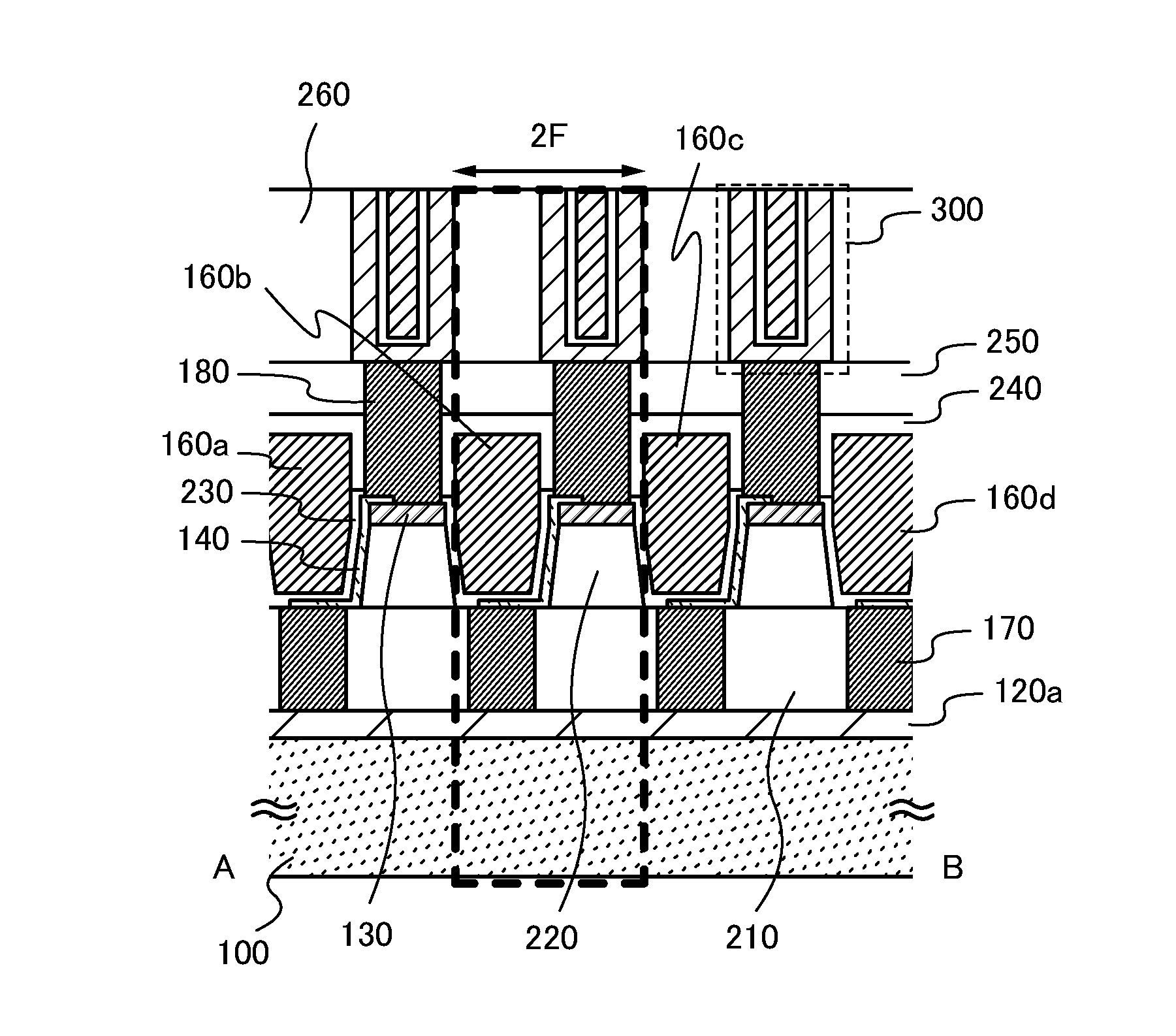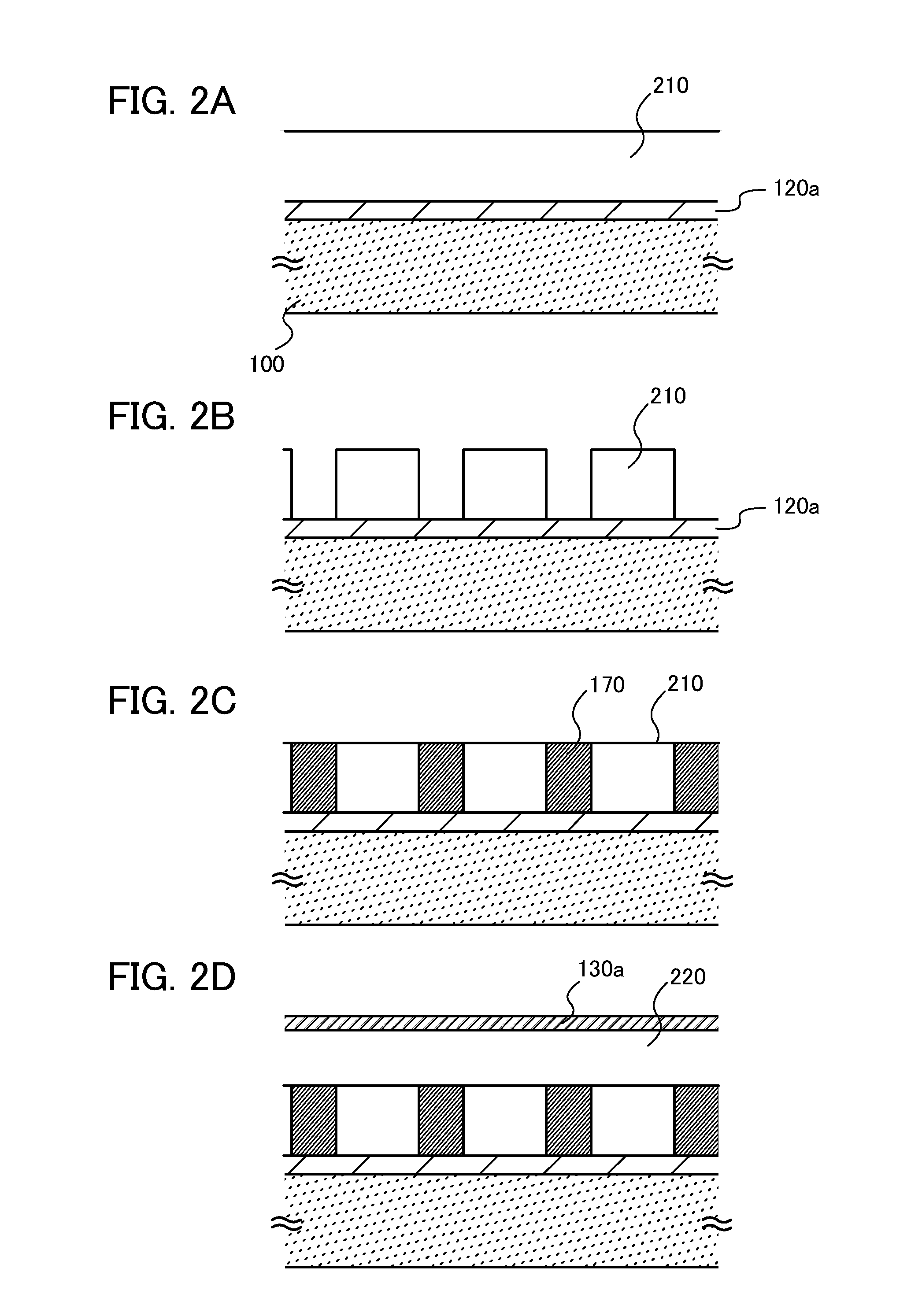Memory device
a memory device and memory technology, applied in semiconductor devices, semiconductor/solid-state device details, capacitors, etc., can solve the problems of short data retention period, loss of electric charge in capacitors, and difficulty in using capacitors in practice, and achieve the effect of extremely long data holding period
- Summary
- Abstract
- Description
- Claims
- Application Information
AI Technical Summary
Benefits of technology
Problems solved by technology
Method used
Image
Examples
embodiment 1
(Embodiment 1)
[0040]In this embodiment, an example of a structure of a memory cell and a structure a memory device which are embodiments of the present invention will be described. Note that although a drawing illustrating part of a memory device is used for description in this embodiment, the number of bit lines and the number of word lines are not necessarily the ones defined in the description, and practitioners can set them freely.
[0041]FIG. 1B illustrates part of a top view of a memory device in an embodiment of the present invention. A schematic structure is shown by a bit line 120a, a bit line 120b, a word line 160a, a word line 160b, a word line 160c, a word line 160d, a contact plug 170, and a contact plug 180. The other components are not shown for the sake of clarity.
[0042]FIG. 1A is a cross-sectional view of the memory device taken along line A-B in FIG. 1B. The memory device includes over a substrate 100, the bit line 120a; a first insulating layer 210 formed over the b...
embodiment 2
(Embodiment 2)
[0059]In this embodiment, a method for manufacturing the semiconductor memory device described in Embodiment 1 as an example is described. Note that the drawing used for the description is a cross-sectional view taken along line A-B in FIG. 1B.
[0060]First, the bit line 120a is formed over the substrate 100, and the first insulating layer 210 is formed over the substrate and the bit line (see FIG. 2A).
[0061]Although there is no particular limitation on a material which can be used as the substrate 100, it is necessary that the material have at least heat resistance high enough to withstand heat treatment to be performed later. For example, the substrate 100 may be a glass substrate, a quartz substrate, a semiconductor substrate, a ceramic substrate, or the like. When the temperature of the heat treatment performed later is high, a substrate having a strain point of 730° C. or higher is preferably used as the glass substrate. Here, a glass substrate is used.
[0062]Note th...
embodiment 3
(Embodiment 3)
[0092]In this embodiment, an example of a memory device in which memory cells described in Embodiments 1 and 2 are stacked over a substrate with which a semiconductor circuit is formed will be described.
[0093]FIG. 6 is a cross-sectional view of a memory device where a memory cell portion is stacked over a semiconductor substrate where a driver circuit portion is formed. In the memory device, a driver circuit portion 420 for driving a memory cell such as a sense amplifier or a decoder is formed on a single crystal semiconductor substrate 400 by a known technique for forming a semiconductor integrated circuit. A memory cell portion 440 can be manufactured by referring to Embodiment 2.
[0094]A bit line connected to the cell transistor is electrically connected to the driver circuit portion 420 provided in a lower layer through a contact plug or the like. Accordingly, a potential signal output from the driver circuit portion 420 is input to each cell transistor through a co...
PUM
 Login to View More
Login to View More Abstract
Description
Claims
Application Information
 Login to View More
Login to View More - R&D
- Intellectual Property
- Life Sciences
- Materials
- Tech Scout
- Unparalleled Data Quality
- Higher Quality Content
- 60% Fewer Hallucinations
Browse by: Latest US Patents, China's latest patents, Technical Efficacy Thesaurus, Application Domain, Technology Topic, Popular Technical Reports.
© 2025 PatSnap. All rights reserved.Legal|Privacy policy|Modern Slavery Act Transparency Statement|Sitemap|About US| Contact US: help@patsnap.com



